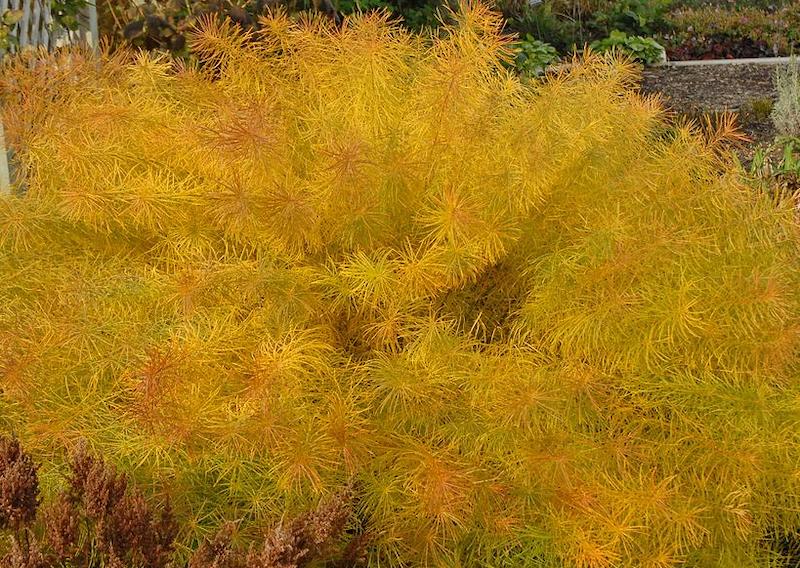Maintenance pruning for Amsonia is easy. The whole plant can be cut back in the fall after the season's top growth has died back. Herbaceous perennials, such as Amsonia, lose all of their top growth in the fall as the roots prepare for winter dormancy. To keep the plant tidy through the winter, cut back all of the spent top growth to within 6 inches of the soil. This is also a great time to mulch the root zone for added insulation if you live in a cold climate.

When to Prune Amsonia
Cut back the spent top growth in the fall. This allows you to also mulch the growth crown if needed. The top growth can be left in place over the winter. This gives non-migrating birds access to the seeds and helps to mark the location of the plant.
Other common pruning techniques such as deadheading and pinching out of the terminal buds are not necessary to keep Amsonia growing well. After the flowers have completed an initial flush in May, the stems will resume growth and increase the height of the plant. Any deadheading will not encourage further blooming of the plant.

How to Prune Amsonia
Step 1 - Prune back spent top growth
The foliage naturally turns yellow in the fall, as the stems begin to dry up. You can cut the whole plant back to within 6 inches of the soil at this time.
Step 2 - Prune to encourage dense new growth
New growth will be dense and healthy when the old top growth is removed. This also helps to control fungal diseases from year to year.
Step 3 - Deadheading does not affect future blooming
Amsonia only produces one flush of flowers before continuing to grow to its full height by the middle of summer. Deadheading does not encourage more flowers.
Amsonia Pruning Tips
- Cut back top growth in the fall if you garden in the colder growing zones
- Cut back the spent top growth at the end of winter if you garden in the warmer growing zones
- Deadheading does not encourage more flowers
- Regular removal of the spent top growth protects the plant from recurring infections from pests and diseases.
 |
Author Robbin Small - Published 6-06-2023 |
